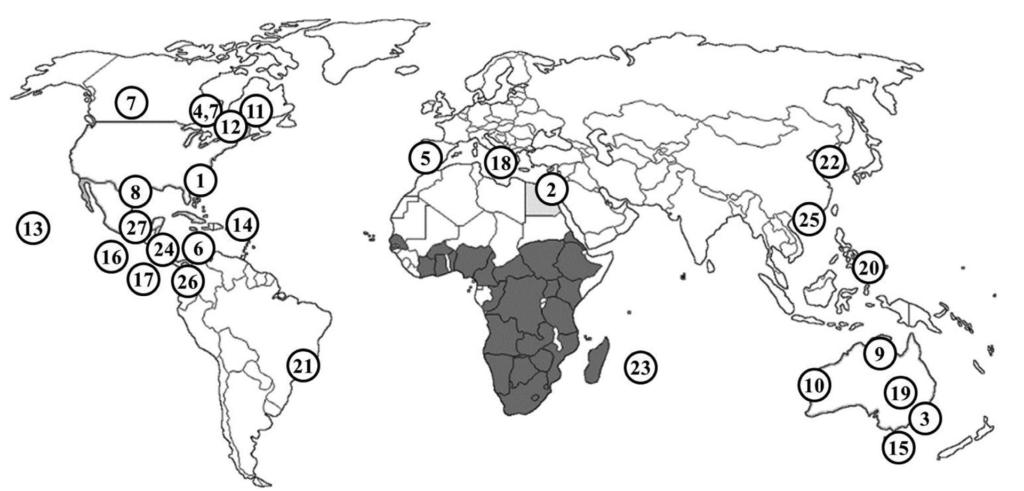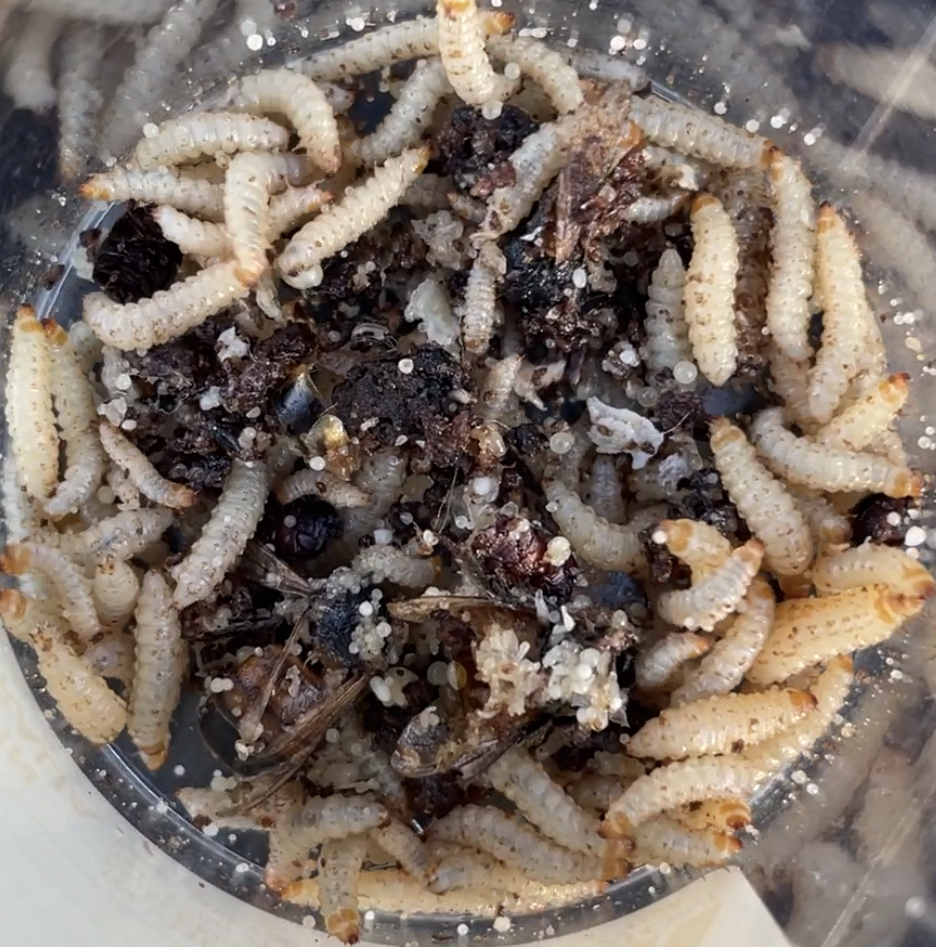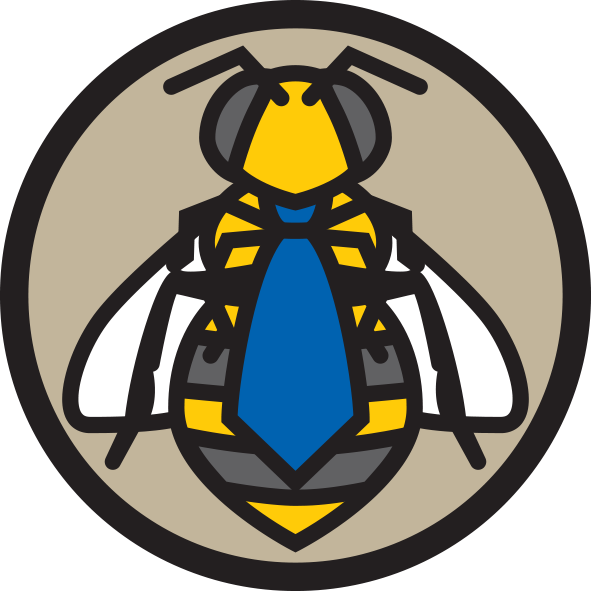Current small hive beetle distribution
Small hive beetle (SHB) (Aethina tumida) originated in southern Africa and has spread across the world (Figure 1). SHB is not considered a serious problem in its native range where the pest only damages weak colonies and stored comb, and African honey bees have natural resistance to SHB.
SHB first arrived in Australia in 2002 and has spread along the east coast and northern Australia, including the very northern part of Western Australia.

Figure 1. Global distribution and confirmed introduction of small hive beetles to July 2021.#
#Dark grey areas show the endemic (native) distribution and the numbered white circles represent introductions in chronological order
Source: Cornelissen & Neumann (2021)
Impacts of small hive beetle overseas
Improved hygienic behaviour by the African honey bee and the habit of quickly absconding under light predation, likely play a major role in keeping SHB in check in Africa and central and south America. Central and south America have ‘Africanized’ bees – hybrids between bees introduced from both Africa and Europe that can withstand SHB infestations. But when SHB infests areas with western (European) honey bee populations, the beetle spreads and causes significant damage to infested colonies.
Table 1. Records of small hive beetle distribution globally. from Cornelissen & Neumann 2021. *from Cagnolo et al 2023
| Year | Place | Country | |
|---|---|---|---|
| 1 | 1996 | Charleston, South Carolina | USA |
| 2 | 2000 | Itay-Al-Baroud | Egypt |
| 3 | 2001 | Richmond, NSW | Australia |
| 4 | 2002 | Manitoba | Canada |
| 5 | 2004 | Lisbon | Portugal |
| 6 | 2005 | Jamaica | |
| 7 | 2006 | Alberta and Manitoba | Canada |
| 8 | 2007 | Coahuila | Mexico |
| 9 | 2007 | Kununurra, WA | Australia |
| 10 | 2008 | Perth, WA (eradicated) | Australia |
| 11 | 2008,2009 | Quebec | Canada |
| 12 | 2008, 2013 | Ontario | Canada |
| 13 | 2010 | Pana’ewa, Hawaii | USA |
| 14 | 2012 | Cuba | |
| 15 | 2012 | Naracoorte, SA | Australia |
| 16 | 2013 | El Salvador | |
| 17 | 2014 | Nicaragua | |
| 18 | 2014 | Sovereto, Calabria | Italy |
| 19 | 2014 | Renmark, SA | Australia |
| 20 | 2014 | Lupon | Philippines |
| 21 | 2015 | Piracicaba, Sao Paulo State | Brazil |
| 22 | 2016 | Miryang-si, GN | South Korea |
| 23 | 2016 | Mauritius Island | Mauritius |
| 24 | 2016 | Guanacoste | Costa-Rica |
| 25 | 2020 | Guangdong and Hainan | China |
| 26 | 2020 | Palmira | Columbia |
| 27 | 2020 | Peten Dept. | Guatemala |
| * | 2022 | Paraguay | |
| * | 2022 | Bolivia |
*Source: Cagnolo et al., 2023
Interactions with varroa
Numerous studies have identified both varroa and small hive beetle (SHB) as contributors to colony losses. There is a lack of information on the financial impacts of SHB to beekeeping, and little data available on the economic effects of SHB in combination with varroa.
Research shows no additional effect of SHB to varroa in Mexico and Cuba, and a lack of information from other southern American nations where SHB has more recently spread (Figure 1).
In the eastern United States, the varroa threshold — the threshold at which colony health is impacted and treatment or management techniques should be used — has not changed since the arrival of SHB. Researchers undertook a two-year experiment to determine if the combination of varroa and SHB resulted in increased morbidity of bee colonies. They found that varroa infestation decreased with increasing numbers of SHB — more of one is associated with less of the other. Co-infestation did not result in increased bee colony morbidity.
No effects have been found with SHB alone or in combination with varroa on winter colony losses, or on the number of Nosema ceranae spores.
Researchers also found that colonies with both varroa and nosema had higher maximum temperatures in winter clusters than colonies with only one or neither pest. Colonies infested with both pests, or only with varroa, had greater temperature fluctuations than colonies with only SHB.

Hive beetle larvae collected from a slime out. Photo credit Nadine Chapman
What can we expect in Australia?
It is important to note that SHB arrived after varroa everywhere else in the world, but in Australia, SHB was already an established pest prior to the arrival of varroa.
SHB is more prevalent and problematic with warm temperatures and high humidity. As such, how thermoregulation is affected in the Australian summer may be of more relevance to colony health than the research conducted in winter in Maryland, USA.
When predicting how SHB and varroa will interact in Australia it would be helpful to look at parts of the world with a similar climate to Australia such as parts of Africa and South America. An important difference is that African and Africanized bees have a number of traits that make them less susceptible to both pests, so it is difficult to predict how varroa and SHB will interact with the Australian bees, that have a European origin, and the Australian climate.
In nations with European bees and both pests, varroa is considered the primary problem and the biggest threat to honey bee populations. It is expected that SHB will remain a seasonal problem, while varroa, will require a change with beekeeping practices and ongoing treatment and management.
Effects of varroa treatment and management on SHB
Varroa treatment and management may also have an effect on SHB. Synthetic acaricides including Fiproni, amitraz, permethrin and coumaphos are used to treat both pests. Breaks in the brood cycle for varroa control may have some impact on SHB, although because they also eat pollen a break in the brood cycle may have little or no effect on SHB. The use of screened bottom boards for varroa may not be effective against SHB if the mesh size is too small for them to fall through.
More information:
- Resilient Beekeeping Bee Health Factsheet – Agrifutures Australia – https://honeybee.org.au/wp-content/uploads/2024/05/Resilient-Beekeeping-Bee-Health-Factsheet.pdf
Acknowledgements:
- Holmes, Gerdts, Grassl, Mikeheyev, Roberts, Remnant, Chapman (2024) Resilient beekeeping in the face of Varroa. AgriFutures Australia.
- Cagnolo, Aldea-Sánchez, Branchiccela, Calderón-Fallas, Medina-Medina, Palacio, Velarde, Teixeira, Antúnez (2023) Current status of the small hive beetle Aethina tumida in Latin America. Apidologie 54: 23
- Cornelissen, Neumann (2021) Invasive species require global efforts: COLOSS task force small hive beetle. Bee World 99: 29-31
- Pirk, Strauss, Yusuf, Demares, Human (2016) Honeybee health in Africa – a review. Apidologie 47: 276-300
- Schäfer, Ritter, Pettis, Neumann (2010) Winter losses of honeybee colonies (Hymenoptera: Apidae): the role of infestations with Aethina tumida (Coleoptera: Nitidulidae) and Varroa destructor (Parasitiformes: Varroidae). Journal of Economic Entomology 103: 10-16
- Schäfer, Ritter, Pettis, Neumann (2011) Concurrent parasitism alters thermoregulation in honey bee (Hymenoptera: Apidae) winter clusters. Annals of the Entomological Society of America 104: 476-482
- This article was peer-reviewed by Steve Fuller and Danny LeFeuvre.

